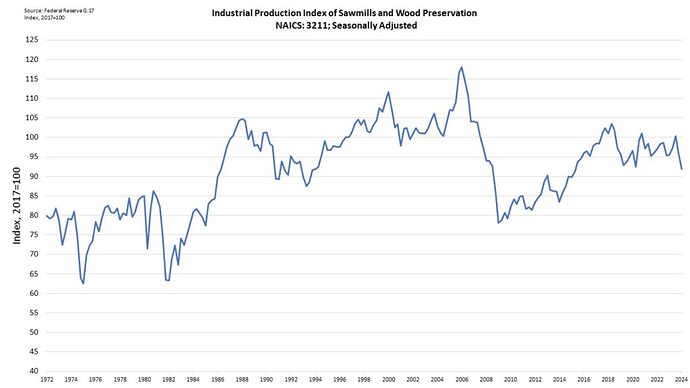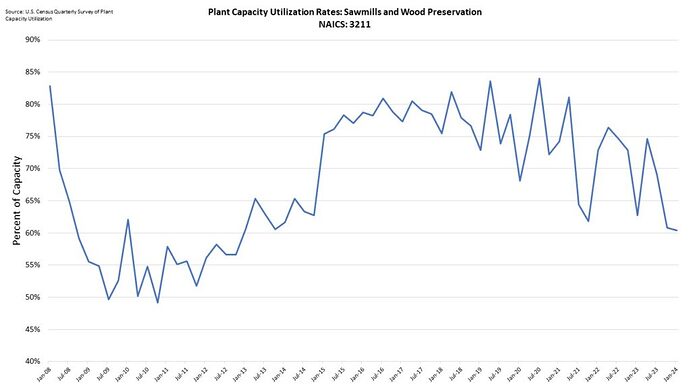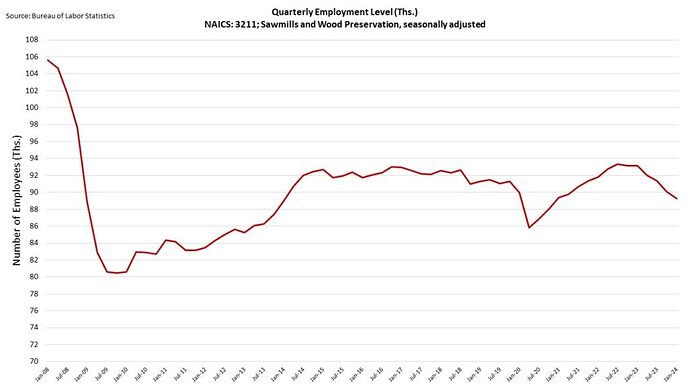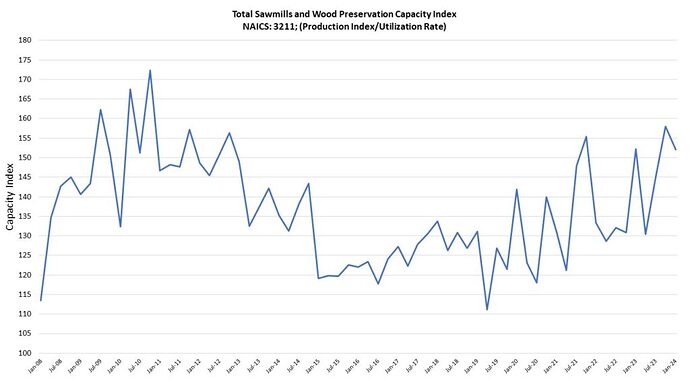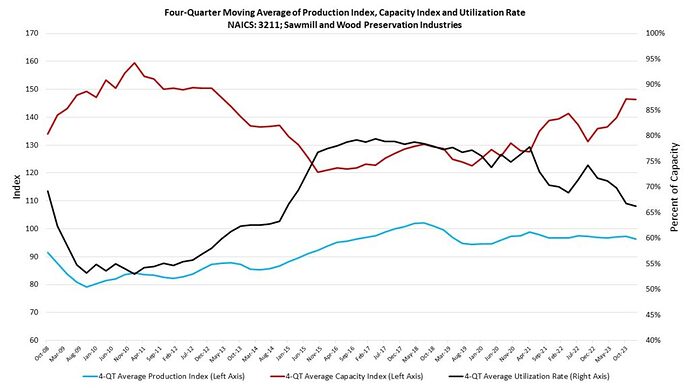The production index for sawmills and wood preservation industries fell at the start of 2024 to 91.9 in the first quarter (the index measures real output during 2017 at a level of 100). This is the second straight decline for the quarterly level according to the Federal Reserve’s recent release of G.17 data. The index fell 4.3% in the first quarter of 2024, after also falling 4.3% during the previous quarter. Compared to a year ago, production was 3.8% lower at the start of 2024.
To provide a better understanding of the sawmill and wood preservation industries, the Census Bureau’s Quarterly Survey of Plant Capacity Utilization is another source of interest. This data comes from quarterly surveys of U.S. domestic manufacturing plants and includes a subindustry grouping of sawmills and wood preservation firms. These estimates of utilization rates are based on full production capability, meaning the utilizations rates are found by taking the market value of actual production during the quarter and dividing by an estimated market value of what the firm could have produced at full production capacity.
The sawmill and wood preservation industry full utilization rates fell marginally for the second straight quarter, from 60.8% to 60.4%. This decline explains part of the production decline for the industry. Additionally, as average plant hours per week in operation fell for these firms, the decline was not due to an increase in production capacity of these firms but rather a decline in output as the plants were in operation for fewer hours.
Notably, employment at these firms has fallen since the first quarter of 2023. The 2023 level of employment stood at 93,130, while by the first quarter of 2024 this level fell to 89,260. Employment among sawmills fell for every quarter of 2023. The Great Recession had a substantial impact on this industry, as employment fell from 105,630 in the first quarter of 2008 to a series low of 80,470 in the fourth quarter of 2009. Employment rose from this low in 2009 to 91,000 in 2014 and has remained around this level for the last ten years.
By combining the production index and utilization rates, we can compose a rough estimate of what the current production capacity is for U.S. sawmills and wood preservation firms. Shown below is a quarterly estimate of the production capacity index. This capacity index measures the real output if all firms were operating at their full capacity.
Because the data is volatile, computing a moving average of utilization rates, the production index and capacity index are shown below to provide a clearer picture of the industry.
Based on the data above, sawmill production capacity increased from 2015 but remains lower than peak levels in 2010. Production by sawmills continues to be higher mainly because the mills are running at higher than historical levels of utilization, as shown in black above. Much of the addition in capacity has been recent, as utilization rates have fallen but production continues to run at higher levels.
